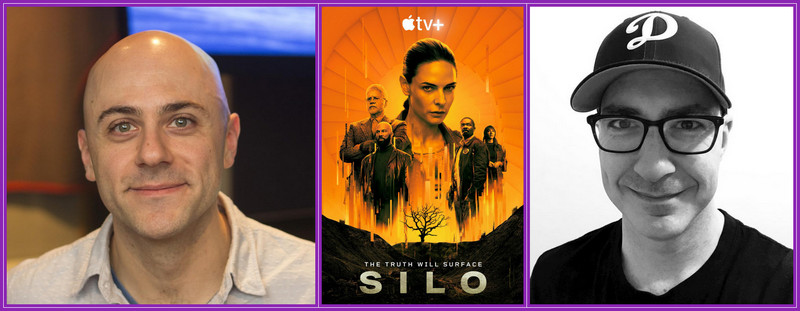
An entertaining and enlightening exclusive interview with Supervising Sound Editor DUSTIN HARRIS and Supervising Sound Editor and Sound Designer NATHAN ROBITAILLE discussing crafting the sonic experience of SILO.
SYNOPSIS: SILO is the story of the last ten thousand people on earth, their mile-deep home protecting them from the toxic and deadly world outside. However, no one knows when or why the silo was built and any who try to find out face fatal consequences. Rebecca Ferguson stars as Juliette, an engineer, who seeks answers about a loved one’s murder and tumbles onto a mystery that goes far deeper than she could have ever imagined, leading her to discover that if the lies don’t kill you, the truth will.
Created by Graham Yost and based on the book series SILO by Hugh Howey, SILO is Executive Produced by Yost and Morten Tyldum. SILO is directed by Tyldum, Adam Bernstein, Bertie Ellwood, David Semel, and Amber Templemore. Boasting an all-star cast led by Rebecca Ferguson, this dystopian underground world of SILO features, among others, Common, Tim Robbins, David Oyelowo, Harriet Walter, Will Patton, and Rashida Jones.
DUSTIN HARRIS and NATHAN ROBITAILLE are an example of a perfect partnership. Having worked together on other projects such as “The Shape of Water” and the upcoming “Freaky Tales” from Anna Boden and Ryan Fleck, as well as individual projects like “Locke & Key” and “The Handmaid’s Tale” for Dustin and more work with Guillermo del Toro for Nathan on “Nightmare Alley” and the acclaimed tv series “Cabinet of Curiosities”, among others, Dustin and Nathan have an easy ebb and flow to them, not to mention each has a good sense of humor.
As we dove into the sound design, editing, and mix of SILO, Dustin and Nathan were generous with their time and their detailed discussion and sound reasoning in this exclusive interview examining specific sonic areas within the series, such as the ambient sound of a concrete mile-high structure and a potential issue with echoing, background voices, creating the sounds of isolation and quiet, multiple stages in designing the cacophony of sounds for the turbine engine room, balancing score with dialogue, foley, amplification, and ambient tones. The result of their efforts makes the experience of watching SILO, not only immersive but enthralling. The world looks and feels real. The world sounds real. The auditory nuance is impeccable and the sonic overlay of the different levels within this silo is rich and full-bodied, just as it is for any of us out in the real world. The emotion is pure and real. Every element makes the world of SILO visceral, tactile, emotional, and the work of DUSTIN HARRIS and NATHAN ROBITAILLE and their teams is a very large part of that.
Going from a broad stroke overview to fine-tuning the aural experience, they discussed, among others:
- broad stroke approach to sound effects and developing focus as details of the silo and the story emerged
- the excitement of creating for the series after reading the book allowed for some additional insight, making notes on details such as politics, emotion, and character attitudes which informed sound design decisions
- challenges of layering effects in the engine/turbine room due to the cacophony of noise
- creating new sounds for the turbine generator; pulling library sounds and incorporating them
- rhythmic elements in the sound design; industrial sounds used to create “a pulse”
- balancing realistic sound effects and intelligible dialogue in a loud environment
- working on Episodes 1, 2, and 3 directed by Tyldum who pays careful attention to loud environments, allowing for appropriate performances and then a “filled-in canvas”
- creating specific sounds in DIY moments with power tools; “our behavior was unsafe but foundational to the show”
- the importance of physical performance and sound design in creating a believable and immersive experience for the audience
- Tyldum’s decision to have actors yell loudly in certain scenes conveys the magnitude of the situation and creates a sense of urgency
- differentiating each level of “class” and purpose within the silo by drawing on real-life analog sounds such as factory noise and building ambiance
- the importance of silence; it conveys volumes
- collaboration of the sound team and the director to determine when to strategically use silence for impact
- praise for other “soundies” including Craig MacLellan working with sound effects, assistant sound editor Jack Madigan, and production sound mixer John Mooney for capturing clear dialogue
- ADR work
- and more!
TAKE A LISTEN. . .
by debbie elias, exclusive interview 09/13/2023
SILO is currently streaming on AppleTV.












